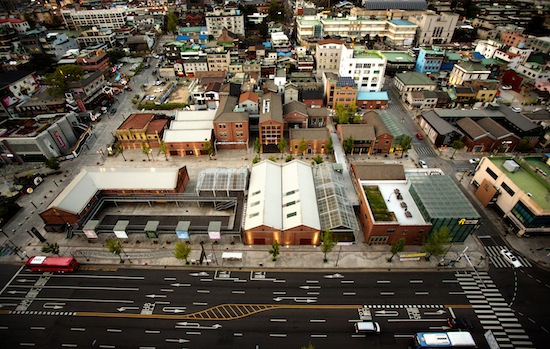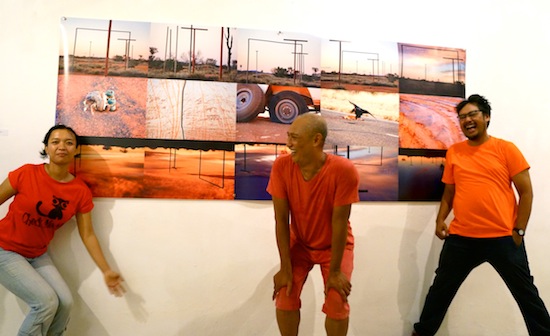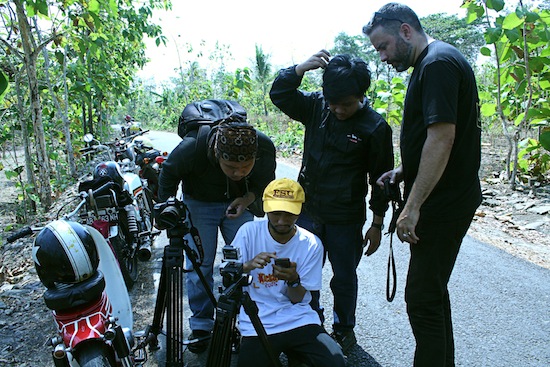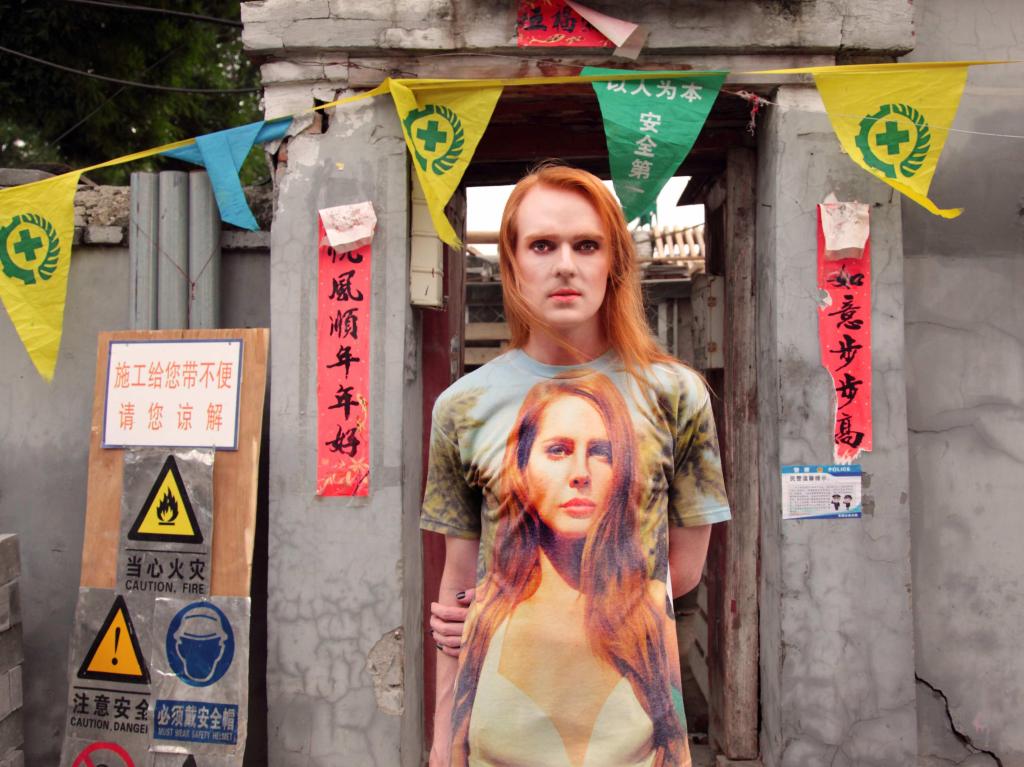Nick Verso, ‘Nick As Lana By Sarah’, resident to China, 2015; supplied courtesy the artist and Asialink.
For more than 25 years Asialink has played a pivotal role in building connections between Australia and Asia for visual artists, performers, writers and arts managers.
The program started by offering just three residencies in Southeast Asia; today it has produced 822 alumni and it is still going strong. Applications have opened for the 2017 Residency Program, with a closing date of 30 September.
The opportunities are remarkable for their variety. Applicants can choose from 54 partner organisations in 13 countries throughout the region.
‘We don’t believe in one size fits all,’ said Eliza Roberts, Asialink Arts Residencies Manager. ‘Asialink doesn’t work to a particular definition of Asia as those boundaries are constantly changing – the program is very responsive to international trends.’
This year Asialink welcomes new host organisations: the Hong Kong Arts Centre (HK); Incheon Art Platform (Korea), and The Beijing Centre for Chinese Studies (China). There are also residencies offered in Cambodia, India, Indonesia, Japan, Korea, Malaysia, Philippines, Singapore, Taiwan, Thailand and Vietnam.
One new opportunity, for Victorian arts professionals, is the Tokyo Wonder Site and RMIT iAIR Creative Industry exchange, which intersects with Architecture, Gaming and Design.
Long-term Asialink partner Cemeti Art House in Yogyakarta is offering a new residency that tests models of exchange by bringing together three artists from Australia, Indonesia and an international partner to conduct a combined residency.
Mella Jaarsma, Co-director of Cemeti Art House, said: ‘Hosting different artists at the same time from different cultures means they learn from each other and get surprised by other habits, other ways of dealing with art, other (cultural) perceptions.’
 Working Process, Tim Woodward, 2010 (1).jpg)
Tim Woodward, HotWave 1, Working Process, Cemeti Art House resident 2010; supplied courtesy Cemeti Art House
Career catalyst
Roberts said that a residency is a ‘fundamental stepping-stone in artist’s careers and a crucial part of the ecology of the arts system’.
‘That experience is absolutely vital, for example it broadens their horizon, their international experience more generally, and intercultural understanding at a personal level,’ she continued.
It is also a fantastic opportunity for participants to build new audiences in the Asian region, new networks and collaborators.
Director, writer and filmmaker Nicholas Verso has recently returned from an Asialink residency at Three Shadows Photography Art Centre in China where he found creative intersections with a Beijing fashion photographer and with robotic scientists.
‘I certainly came back pulsing with ideas,’ he told ArtsHub.
‘I think sometimes in my home life things can get a little too comfortable and you find yourself almost doing more self-admin than actual creation, so to step into another world and be inside a little focused bubble really allows you to dig deeper and achieve a lot in a small space of time,’ said Verso.
The residency has led to an avalanche of opportunities including interest by Mushroom Pictures in a documentary interview series with robot scientists started during his residency, being employed as writer on an upcoming film, the development of a draft of a screenplay ready for financing; the design and storyboard of that film in association with a local artist, and display of the artwork in Australia and China.
Asialink has four host partners offering residencies in China in 2017.

Birds eye view of new Asialink host, Incheon Art Platform, Korea; supplied
What you get with an Asialink Residency
Asialink provides grants of up to $12,000 for residencies of periods of 6 – 12 weeks.
Applicants can choose from one of our four different models:
- A residency with an Asialink host partner
- A self-initiated residency
- A reciprocal residency – these are two-way exchanges that are state specific. This year they target NSW, VIC, ACT and WA artists.
- Residency Laboratory – A platform for testing new models. This year an Intensive and Multilateral residency are on offer.
Asialink emphasises that residents should engage with their local host community as much as possible by conducting workshops, public programs and skills sharing during their residency period.
But the exact outcome of the residency is up to the artist. Jaarsma said: ‘Each artist is bringing his/her own strength into the project and therefore every residency period is very different in its dynamics.
‘It has an impact for the artists themselves and their creative and productive processes as well as an impact for their surroundings and the local scene.’

Karla Dickens, friends in-front of ‘Luna landscape’, resident to Cemeti Art House, 2015; supplied
Advice for residents
Like many artists Verso went to China with a project in mind, but was derailed.
‘So many new unexpected opportunities presented themselves through people I met while in Beijing that were too good not to explore. I think it was those side projects that became even more exciting and broadened my horizons more than just sticking to my detailed plan I had made from the safety of my office back home,’ he told ArtsHub.
The key piece of advice for any residency is to remain flexible and be open to opportunities. It’s also important to be willing to leave your comfort zone.
‘For me, it’s important to look at your environment and gauge whether it’s exciting you to be the best you can be, and be the person you want to be,’ added Jaarsma.
‘We are disappointed if artists just come, hopping to another residency place and they just do their regular thing, or if artists are not so interactive or not willing to share.’
‘For some artists it is love at first sight with the Indonesian culture, and some artists need more time to understand and see its strength.’
We are so conditioned today by the pace of global life to pre-think, pre-plan and pre-do, that the time and space model that a residency offers is crucial to reflect.
Verso, however, warned that it’s important to leave the “imposter syndrome” at the airport.
‘You can feel you’re a fraud or don’t deserve certain opportunities or experiences. Then when you receive one, you can beat yourself up in believing you’re not working hard enough or doing enough with what you’ve been given.
‘Asialink helped me see that inspiration and creativity can’t be judged by KPIs and be scrutinised scientifically. It’s about being open to life and other cultures.’

Reko Rennie, Makan Angin, Working Process, Cemeti Art House resident in 2014; supplied courtesy CAH
Lands of opportunity
With this era labelled the Asian Century, it is a particularly good time for artists to become involved in Asia.
‘A number of my friends have moved to Asia because they’ve discovered they can have much more impact and advance their careers in far more enriching ways in that region,’ said Jaarsma.
Verso agreed: ‘I think Australia is realising that it’s much more logical to strengthen ties with Asia. In Asia there is space to explore, to develop and test new ideas. It is easier to connect to a public or community, to communicate your ideas and share these without the feeling of concurrence. Many interdisciplinary projects take place because of this,’ he added.
Asialink’s 2012 survey of past residents revealed that 100% remained in contact with the country they visited, with 90% staying in contact with the actual host organisation.
Roberts concluded: ‘New networks feed into future work for an artist – It is an incredible moment for any career.’
Applications for 2017 Asialink Arts Residencies close 30 September 2016.
Applications can be made through the Asialink website.





